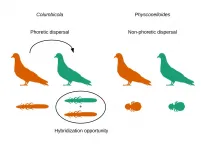The authors note that this regimen may be beneficial while vaccine supplies are initially limited.
Study lead author Professor Andrew Pollard, University of Oxford, UK, says: "Vaccine supply is likely to be limited, at least in the short term, and so policy-makers must decide how best to deliver doses to achieve the greatest public health benefit. Where there is a limited supply, policies of initially vaccinating more people with a single dose may provide greater immediate population protection than vaccinating half the number of people with 2 doses. In the long term, a second dose should ensure long-lived immunity, and so we encourage everyone who has had their first vaccine to ensure they receive both doses." [1]
Other vaccines, such as for flu, Ebola and malaria, also give greater protection and stronger immune responses after a longer interval between doses.
Following the regulatory approval of a vaccine, it is important to understand the best dose interval to ensure optimal roll-out of the vaccine. Factors associated with this include the effect of different intervals on protection after the second dose, and the risk of infection between doses either due to lower efficacy of a single dose or rapid waning of efficacy while waiting for the second dose.
To understand these factors, the authors combined data from randomised controlled trials in the UK, Brazil, and South Africa, including 8,948, 6,753, and 1,477 people, respectively (totalling 17,178 people). Participants were aged 18 years and over (see appendix table S1 for more detail), and either received two standard doses of the Oxford COVID-19 vaccine (8,597 participants) or a control vaccine/saline placebo (8,581). In the UK trial, a subset of participants (1,396 people) received a lower dose of the vaccine as their first dose.
The primary outcome of the trial was the number of symptomatic COVID-19 cases (confirmed by positive COVID-19 test, and having fever, cough, shortness of breath, loss of smell or loss of taste) in the control and COVID-19 vaccine groups occurring more than 14 days after the second dose.
The exploratory analyses in the new study (of the efficacy of an extended interval between vaccine doses and of a single dose) were requested by regulators and policy makers, and the authors also conducted an analysis to establish the impact of one or two doses of the vaccine on reducing all COVID-19 cases (including symptomatic cases, cases with less common COVID-19 symptoms, asymptomatic cases, and those with unknown symptoms) as an indicator of how the vaccine might help to reduce transmission in the community. The authors note that these were not pre-specified analyses and should be considered as supportive analyses to the overall vaccine efficacy analyses.
The single-dose analysis included participants who chose not to receive a second dose (the trial was originally set up as a single-dose vaccine trial, and so some chose not to participate further), and people who had COVID-19 before they received their second dose. To establish the efficacy of a single dose, the authors analysed participants who had had their first standard dose who tested positive for COVID-19 more than 21 days afterwards.
Looking at the interval between two standard doses and its impact on efficacy, participants who were given their doses 12 or more weeks apart had greater protection (81%, based on 8/1,293 cases in the COVID-19 vaccine group vs 45/1,356 cases in the control group), than people given their two doses less than 6 weeks apart (55%, based on 35/3,890 cases in the COVID-19 vaccine group vs 76/3,856 cases in the control group). Efficacy results were supported by immune response results in 18-55 year olds, which found that binding antibody responses were more than two-fold higher in the group having their two vaccines with a longer delay.
Following a single standard vaccine dose, vaccine efficacy from 22 days to 3 months after vaccination was 76% (based on 17/9,257 cases in the COVID-19 vaccine group vs 71/9,237 cases in the control group), and modelling indicated that this protection did not reduce over the 3 months. In addition, antibody levels against the SARS-CoV-2 spike protein remained at similar levels for 3 months.
The authors note that it is not yet clear how long protection with a single dose of the vaccine might last, as the trial results are limited to the 3 months maximum. For this reason, a second dose of vaccine is still recommended.
Following an additional month of data from the interim efficacy results (which were based on 131 COVID-19 cases), there were 332 cases amongst the trial participants. Based on these cases, the study finds that two doses of the vaccine protect against symptomatic disease in 67% of cases (based on 84/8,597 cases in the COVID-19 vaccine groups vs 248/8,581 cases in the control group) - with a vaccine efficacy of 63% for people given two standard doses (74/7,201 cases in the COVID-19 vaccine group vs 197/7,179 in the control group), and of 81% for those given a low dose then a standard dose vaccine (10/1,396 cases in the COVID-19 vaccine group vs 51/1,402 in the control group).
In addition, counting from 22 days after participants had received their first dose, there were no hospitalisations in the COVID-19 vaccine group and there were 15 in the control group.
Study author, Dr Merryn Voysey, University of Oxford, UK, says: "This latest analysis confirms our previous findings of the higher efficacy of a low- then standard-dose regimen. However, with additional data available, we have found that the enhanced efficacy and immunity may be partly driven by the longer interval between doses that was common in this trial group. This further supports the relationship we have found between vaccine interval and efficacy in those receiving two standard doses, which is the preferred regimen because there are more data to support its use, and because it is simpler to deliver a vaccine programme when the same vaccine is given for both doses." [1]
Lastly, looking at how the vaccine might help to reduce transmission in the community, the authors estimate that a single dose of the vaccine may lead to a 64% reduction, and that two doses may reduce cases by 50% (the effect of two doses appears less than a single dose because there are more asymptomatic cases included in this part of the analysis, and vaccine efficacy against asymptomatic cases is lower). They suggest that these data may mean that using the vaccine as outlined by regulators could have a substantial impact on transmission by reducing the number of infected individuals in the population.
Professor Pollard says: "It is important to understand whether vaccines can reduce COVID-19 transmission. While specific transmission studies were not included in our analysis, UK trial participants were tested for COVID-19 each week regardless of symptoms, and we combined this with other positive COVID-19 cases in the trial to help determine the overall impact of the vaccine on risk of infection. If the vaccine had no impact on transmission, we would expect that the number of positive tests in our trial would be the same in vaccine and control groups. This is because the vaccine would convert severe cases to mild cases, and mild cases to asymptomatic cases. However, we saw a reduction in the overall number of positive cases, which indicates that the vaccines may reduce infections. Real-world assessments of how the vaccine is working in the population will be needed to confirm this preliminary result." [1]
The authors note some limitations to their study, including that there is limited follow-up after the second dose of the vaccine currently and more research is needed to determine duration of protection.
The trials were not designed to establish whether vaccine efficacy differed by dose interval and the varying intervals between doses were a result of the complex logistics of running large-scale clinical trials in a pandemic. These results in the study are therefore post-hoc exploratory analyses only, and have potential for multiple sources of bias. However, the authors say that these analyses provide a peer-reviewed assessment of the approach that is currently being used to deploy their vaccine during the pandemic.
INFORMATION:
NOTES TO EDITORS
This study was funded by UK Research and Innovation, National Institutes of Health Research (NIHR), The Coalition for Epidemic Preparedness Innovations, the Bill & Melinda Gates Foundation, the Lemann Foundation, Rede D'Or, the Brava and Telles Foundation, NIHR Oxford Biomedical Research Centre, Thames Valley and South Midland's NIHR Clinical Research Network, and Astra Zeneca. A full list of researchers involved in the study, and their affiliations, can be found in the Article and Appendix.
Preprint is available at: https://papers.ssrn.com/sol3/papers.cfm?abstract_id=3777268
[1] Quote direct from author and cannot be found in the text of the Article.
The labels have been added to this press release as part of a project run by the Academy of Medical Sciences seeking to improve the communication of evidence. For more information, please see: http://www.sciencemediacentre.org/wp-content/uploads/2018/01/AMS-press-release-labelling-system-GUIDANCE.pdf if you have any questions or feedback, please contact The Lancet press office pressoffice@lancet.com
Peer-reviewed / Randomised Controlled Trial / People
Previously published as a preprint on 1 February




